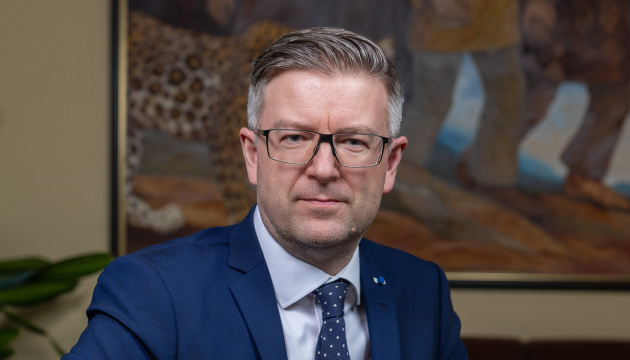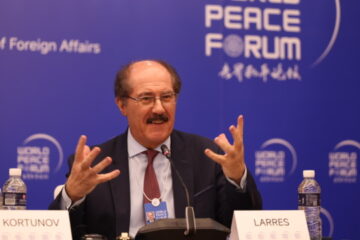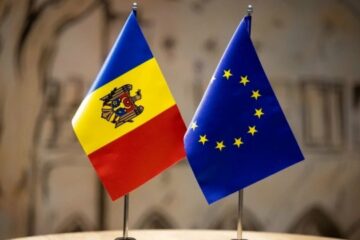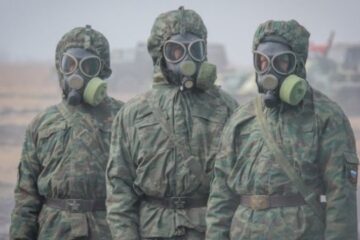Kaimo Kuusk assumed the role of Permanent Secretary of the Ministry of Defense of Estonia in September 2024, bringing a wealth of experience from both the diplomatic and intelligence sectors. In 2019-2023, he served in Ukraine as an Ambassador, where he played a pivotal role in coordinating Estonia’s military aid during Russia’s full-scale invasion. He told Ukrinform about main visions on Estonian security and its concerns about shared border with Russia, influence of IT on the battlefield and prospects of mutual military trainings.
WE MUST RELAUNCH OUR DEFENSE INDUSTRY
– In February 2022, you were here as an Ambassador to Ukraine and you were in the middle of the events then because you were meeting the delivery of Javelin anti-tank missile systems at the airport. At that moment, did you already realize how severe the situation was?
– That was on the 18th of February – six days before the large-scale war was started by Russia. We were there at the Boryspil Airport together with our military attaché and myself as an Ambassador. On the Ukrainian side, it was the Deputy Minister of Defense, a really good guy, and he confirmed that those Javelins will be immediately transferred to the frontline units, that they will not be stored somewhere in warehouses. This was the most important message, because I knew that their hit rate is close to 100%. For me, it was important to know that we were helping Ukraine and its frontline units to wipe out the Russian tanks if needed. Of course, we didn’t expect this war to get as large as it turned out to be, nor did we know that this war would last more than three years already and it is still continuing.
– You then moved from diplomacy into a key defense leadership role. How has your personal perspective on war and Estonia’s responsibility changed over more than three years?
– First of all, being ambassador in Ukraine gave me a personal perspective and personal touch with Ukraine. It is truly the loveliest country and I would like to help it as much as possible. While being there, I traveled a lot. Five days before the large-scale war, we went to the Ukrainian-Belarusian border, together with the Spanish Ambassador. In October 2021, we were in the East on the zero line together with permanent secretaries of almost all ministries of Estonia, which personally gave me a feel for the tactical situation. Shifting the role in September 2024 gave me a wider perspective of the interconnections between countries and regions. The understanding that you are fighting for your freedom and we are helping you to fight for our freedom as well – it’s the combination of those experiences in Kyiv and being in this role where I am at the moment. What we need to do here in the West is to kickstart our own military industry to help you and to also be better prepared for the future. That is also a combination of these lessons learned from Ukraine and the position I’m in at the moment because, as mentioned in the first question, we didn’t expect something this big to actually happen and last as long as it has, although in hindsight the warnings were there. However, it is not enough to just take the shells from shelves and bring them to Ukraine. You are running out of them. You need to produce shells on your own. Those are the highlights I would like to stress.
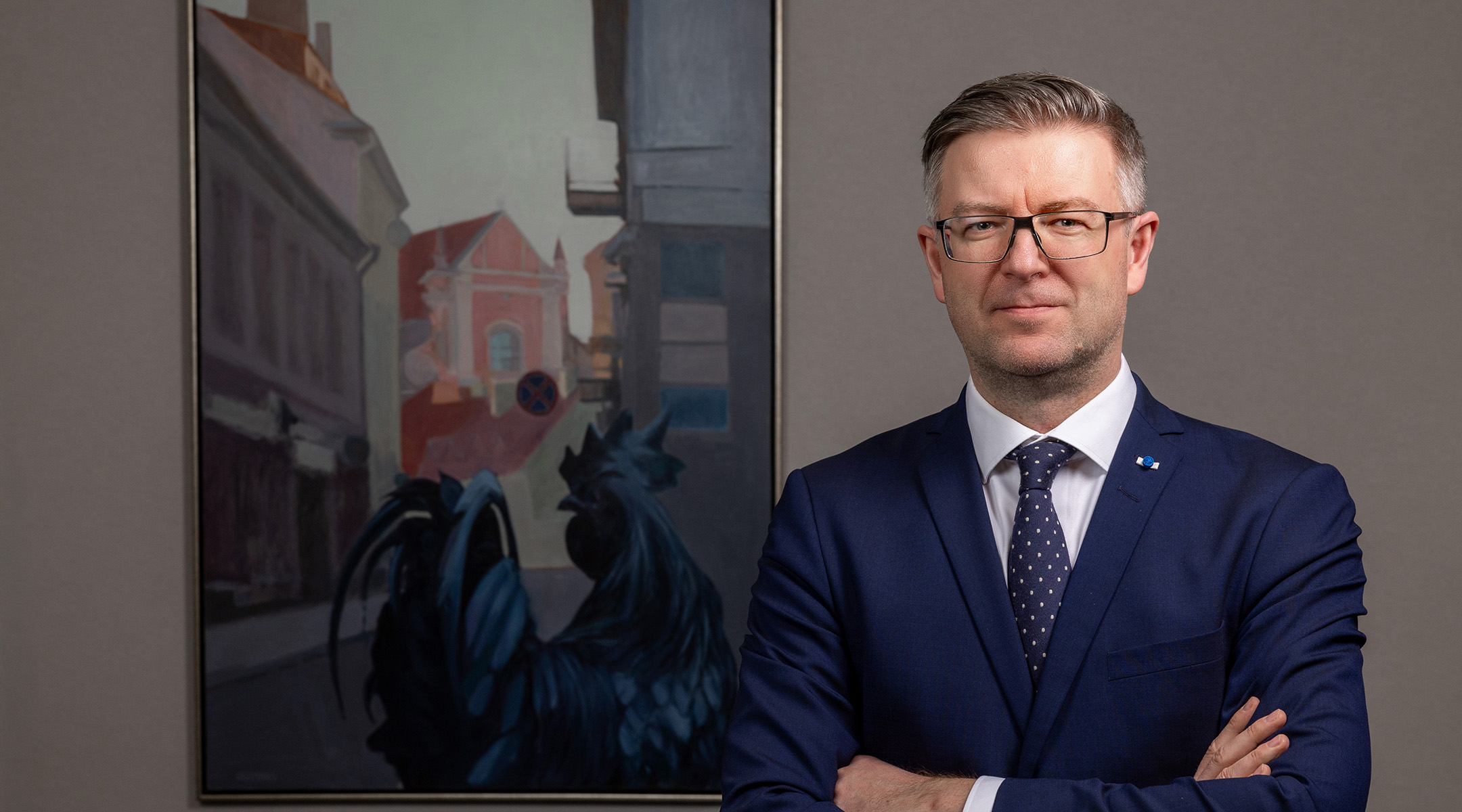
WE CANNOT HIDE BEHIND THE EMPTY WORD “NEUTRALITY”
– In April 2023, Estonia made a very strong move by donating all its towed howitzers to Ukraine and it was an unprecedented move and it showed an example to many other countries. So, how was this decision made and where does this political clarity come from?
– I think there is a combination of our historical experience and geographical position as well. We have learned from our past that it is not possible to hide yourself behind the hollow word “neutrality”. We tried it. In 1939, we declared ourselves neutral. We thought that we can hide from history – but in this neighborhood it is just not possible. So, learning from the memories of our grandparents, it was clear for us that we need to act. We cannot just stand still and hope that the beast will be fed and not hungry anymore. That’s not the case. Since 1991 we implemented a totally different approach in Estonia. Here we live in a compact country (I’m repeating that I refuse to call us small (approx. aut. – joking) and we cannot compete with the bigger countries in total volumes, but what we can do is to be first and to show by example that some steps can be done without the world or your society collapsing. When we gave you our towed howitzers, we took a risk doing so. At the same time, we minimized the risk by helping you with those weapons to destroy the enemy we both have. Someone needs to learn from history, we try to be the ones.
– So, because of Estonia’s example, some other Western allies were more eager to give other kinds of weapons… For example, giving Leopards to Ukraine was considered too bold in 2022 – but in September 2023 they were delivered. Now we have had them for several years already. Fighter jets also…
– Absolutely. Giving fighter jets (F-16 – approx.. aut.) seemed absolutely undoable. Some of the big allies shouted at us that don’t even mention main battle tanks in theoretical construction. However, if we lead by example, we take away excuses from others. If this compact nation, Estonia, can do something, all the others’ excuses are not valid anymore. The same applies to increasing defense spending. If someone, a bigger nation, is telling us that they cannot do something because they need to invest into their health care system, we can look at them wide-eyed and ask: «So, you think we don’t need to invest in our health care system»?
WE DO NOT INTEND TO START ANYTHING, BUT WE WILL DEFEND OURSELVES
– Let’s talk a little bit about this shared border situation with Russia – for example, in Narva, with a lot of so-called Russian-speaking population. So, how is the situation there? Is the Ministry of Defense of Estonia concerned about this so-called Russian-Belarussian military training “Zapad” as the Russians are calling it?
– First, in the case of “Zapad”, we have to thank you, Ukraine. You have done a great job destroying Russian military equipment and killing many of the aggressor’s military personnel. Thanks to you, they are struggling to put together a significant number of units for this exercise. It’s not empty words when we are saying Ukraine is really defending Europe at the moment. You are. You are part of Europe and you are defending it. Yes, we share the border with Russia – that’s the geography. We have supported you and we have seen what aggression means. We know that we are currently in the era of power politics. And well, if aggressor Putin said that – quote – “wherever a Russian soldier sets foot, that’s ours”, we take it word for word. That is why we need to bolster our Eastern border, the Eastern flank of NATO, in a way that no Russian soldier ever steps on our territory. That is why we are building a Baltic defense line and putting a unit in our Estonian city Narva. It’s up to us to plan where it’s logical to keep our soldiers and defense forces. We haven’t done it for 30 years, but now we are doing it because as we have seen it also from Ukraine, it’s a hell of a difficult task to get territory back from Russia.
– Former Estonian Prime Minister Kaja Kallas once said: “A dictator will go as far as we allow him”. Do these words also explain and shape the current military planning of Estonia? And what steps, except expanding GDP to 5%, are being taken towards strengthening the security of Estonia?
– Yeah, we are raising our defense spending from next year on average to 5.4% of GDP. We are investing it into our own freedom. We will invest in capabilities we foresee are needed to defend Estonia and defend in a way that we will not let the aggressor cross the border. I mentioned the Baltic defense line, but I also highlight the deep strike capability, which allows us to destroy the enemy already on their side of the border. We are not starting anything, but we will defend ourselves. So those are the lessons learned and this is also reflecting what Kaja Kallas has rightly said – don’t let the aggressor move forward, stop them already where your border starts. What we expected really when the Russian large-scale war started is that if with our help Ukraine will be able to make Russia feel some pain on the battlefield, they will pull back. We were wrong. Russia needs to be pushed back. Our planning and support of Ukraine needs to be built on the same logic.
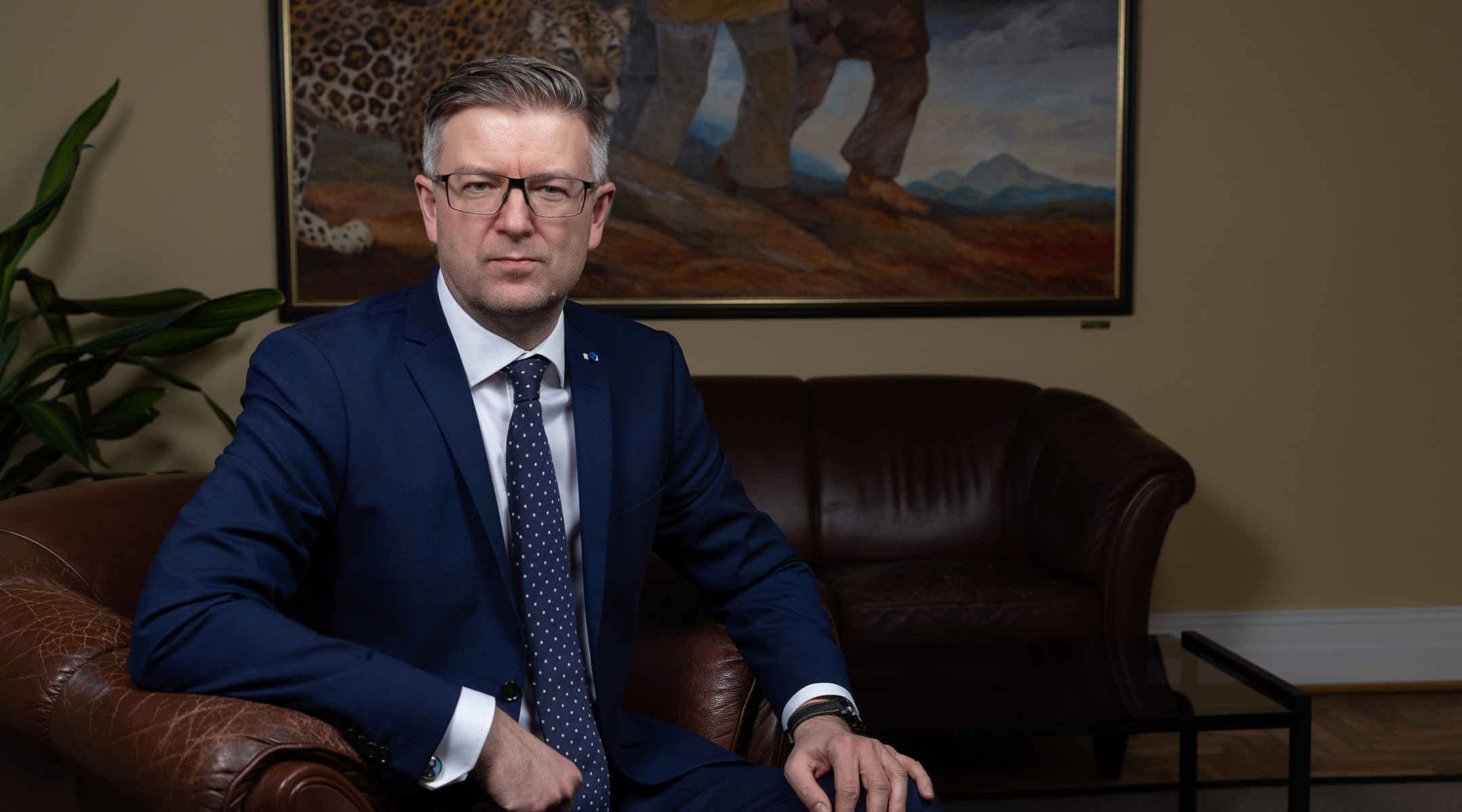
WE MUST LEARN FROM YOU, BECAUSE THE RUSSIANS ARE ALSO DEVELOPING RAPIDLY
– If we’re talking about the cooperation, could you share more about the role of Estonia in the IT coalition supporting Ukraine, considering a big threat from Russia in this hybrid and cyber IT operations?
– IT is a field whose importance sometimes may be underestimated because it is difficult to make serious pictures of how the battles on the cyber field are going on. But IT is really important and it is present on a battlefield even though it’s not seen visually. Russian aggression against Ukraine has been compared with the First World War because of the heavy use of artillery. But even in case of artillery nowadays, you need IT systems to target your fire. IT is the fifth domain in NATO as well as the land, air, navy and space domains, which also stresses its importance. Ukraine understands it very well, actually, you’re very good at IT and cyber. We are leading the IT coalition but not alone, together with another very compact nation, Luxembourg. We have been successful with the whole IT coalition. Totally, we have gathered for Ukraine over 1 billion euros. It includes in-kind donations and money for the equipment needed and requested by Ukraine. The need is even bigger than the number I just mentioned but we will continue.
– Experiencing the scarcity of artillery, Ukrainians develop a wide range of drones. How is the mutual drone production between Estonia and Ukraine progressing?
– Your knowledge and know-how at the moment in this area is the best in the world. We need to learn from the best. We can say proudly that in May, we had an annual military exercise “Hedgehog”. It was 18,000 Estonian and allied troops and among them we were able to invite a Ukrainian drone unit and this drone unit was integrated into the exercise. They showed us and our allies, Brits, Swedes, Finns, what the best nation in drone warfighting can do. We need to learn from you because Russians, damn aggressors, they are developing it also very, very quickly. We are pushing our companies to cooperate with Ukrainian ones to test their products and there are several such companies which are present in Ukraine and vice versa – some Ukrainian companies are opening branches here, starting their production or co-production.
– Let us talk more about these joint military exercises. Estonia previously trained Ukraine’s 12th Special Forces Brigade “Azov” at that time, which is now the 1st Army Corps. So, are there going to be more exercises like these? Because we can see here in Ukraine the type of modern conventional war is changing every year and developing new methods. So, when talking about joint military training, is it about mutual sharing of experience?
– We are training Ukrainian units but at the same time we learn also from you. You mentioned this training for the Azov corps which is really a two-way street. We are also part of the multinational training operation Interflex (https://www.ukrinform.ua/rubric-ato/3923294-u-britanii-obgovorili-plani-pidgotovki-ukrainskih-vijskovih-na-2025-rik.html), which is providing basic training for Ukrainian soldiers. It is led by Brits and we will continue in it as well. Our mutually beneficial training has been there for years already. We have learned from your artillery guys, when we taught your artillery guys on this specific type of artillery we delivered, but at the same time, we learn from you how to be successful against such an aggressor on a battlefield. So I would say “happy to cooperate”, rather than that “we are happy to train you”.
– In one of your interviews, you said – quote – “What more can we do?” So, what’s next? What are the plans in terms of future military cooperation?
– In spring, the “Coalition of the Willing” started to be formed to help guarantee peace if it’s possible to achieve with Russia – it hasn’t worked out, yet. Estonia declared our possible contribution to it and we are keeping our promise. If such a process starts, we will take part in it because it also means shaping the security of our region. We will not stand aside. We will definitely continue to support Ukraine’s full NATO membership. That’s the real security guarantee. And then there are different projects and ideas which I would maybe not even publicly open at the moment. Because it’s better for the enemy to feel it first on the battlefield rather than read it ahead of time from a very respected news channel.
Anna Kostiuchenko, Kyiv
Source: Kaimo Kuusk, Permanent Secretary of the Ministry of Defense of Estonia

